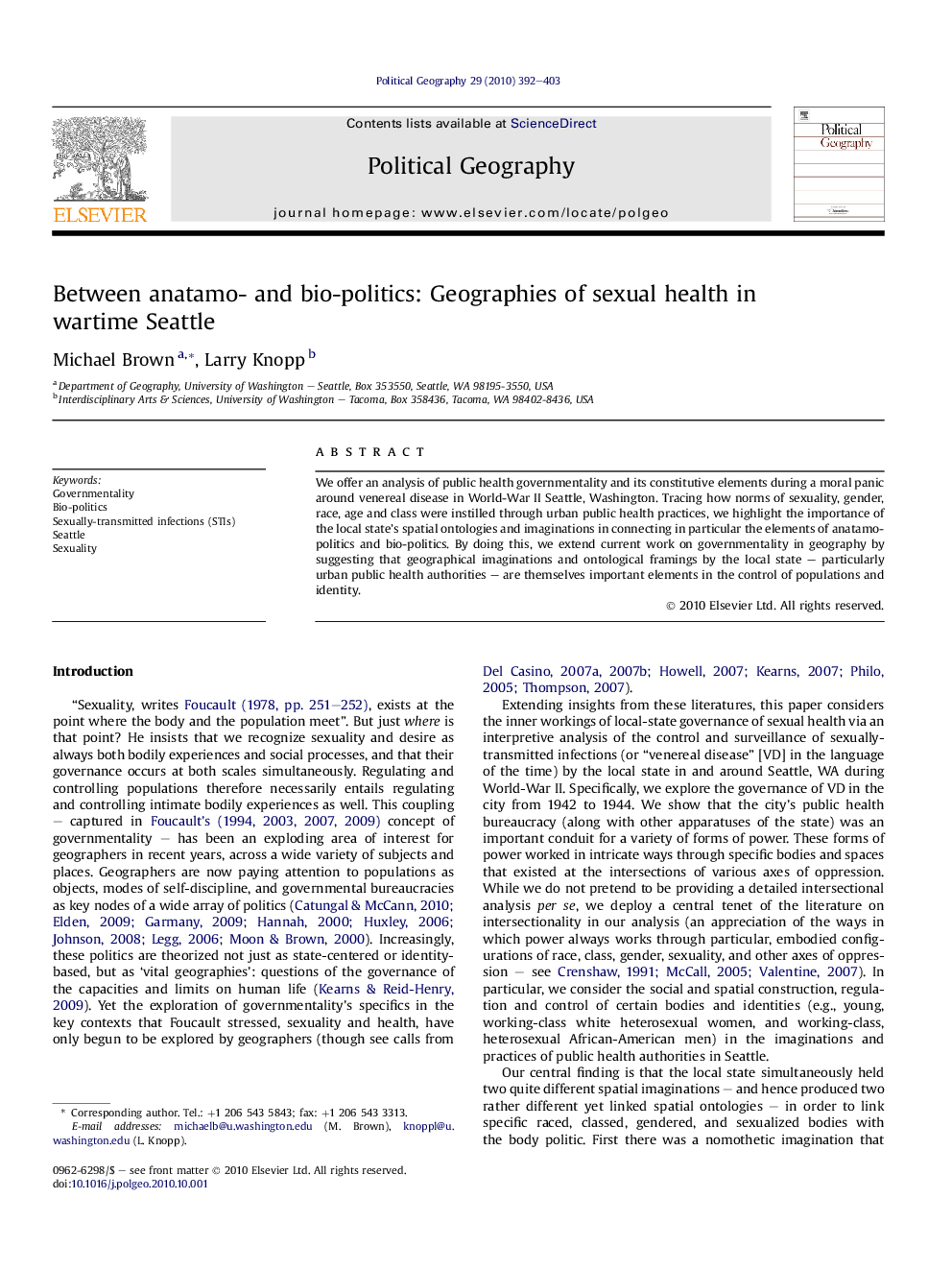| Article ID | Journal | Published Year | Pages | File Type |
|---|---|---|---|---|
| 1062194 | Political Geography | 2010 | 12 Pages |
We offer an analysis of public health governmentality and its constitutive elements during a moral panic around venereal disease in World-War II Seattle, Washington. Tracing how norms of sexuality, gender, race, age and class were instilled through urban public health practices, we highlight the importance of the local state’s spatial ontologies and imaginations in connecting in particular the elements of anatamo-politics and bio-politics. By doing this, we extend current work on governmentality in geography by suggesting that geographical imaginations and ontological framings by the local state – particularly urban public health authorities – are themselves important elements in the control of populations and identity.
Research highlights► We offer an analysis of public health governmentality venereal-disease in World-War II Seattle. ► Anatamo-politics and bio-politics were connected by the local state’s spatial imaginations. ► Spatial imaginations specified threats through sexuality, gender, race, age and class. ► Geographical imaginations are important elements in the control of populations and identity.
